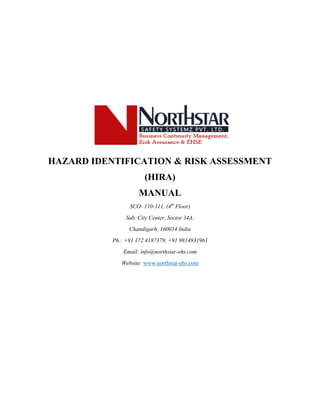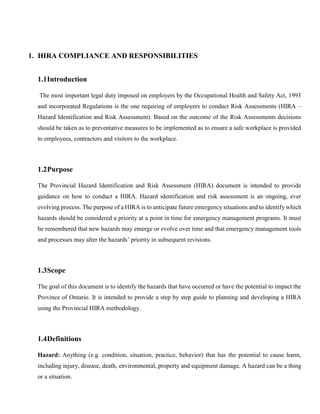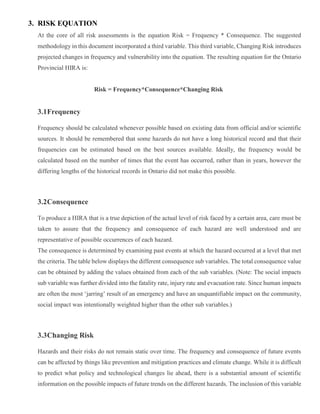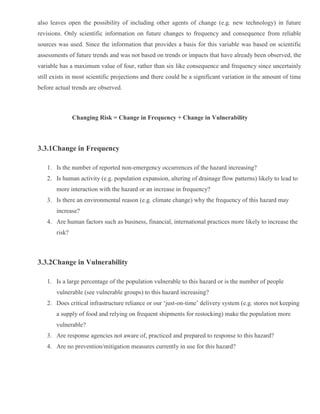The Hazard Identification & Risk Assessment (HIRA) manual outlines the procedures for conducting risk assessments in accordance with occupational health and safety regulations. It emphasizes the ongoing process of identifying hazards, assessing risks, implementing control measures, and reviewing their effectiveness to ensure workplace safety. The document also introduces a risk equation that incorporates frequency, consequence, and changing risk to provide a comprehensive understanding of potential hazards over time.










